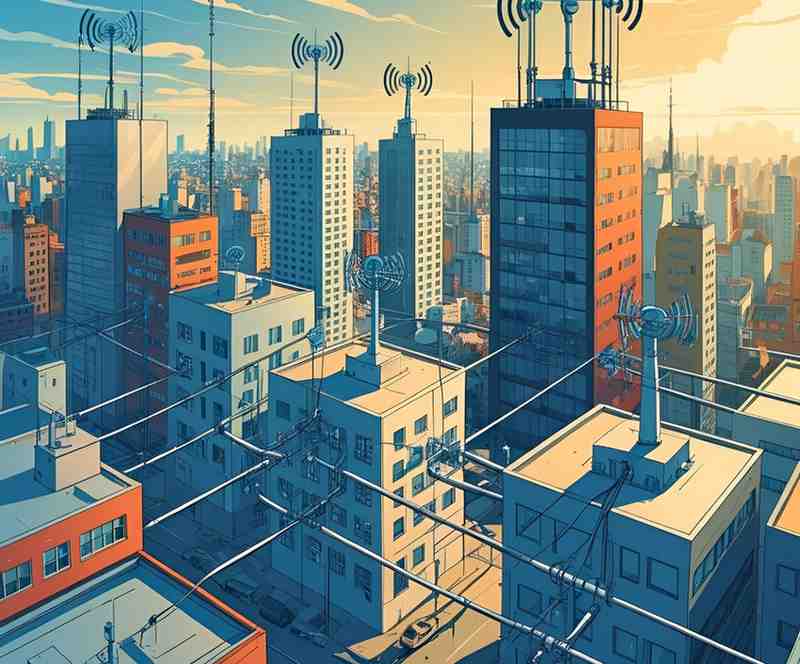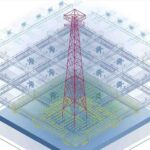

If you have ever lost signal in a parking garage, hospital corridor, or office basement, you’ve experienced the exact problem that Distributed Antenna Systems (DAS) are designed to solve.
In our interconnected world, mobile devices are not just for communication; they are necessary tools for work, travel, entertainment, and safety. But for all our wireless dependence, strong signal coverage is not always guaranteed, especially indoors. This is where DAS steps in, playing a crucial, often Unnoticeable, role in wireless network infrastructure design.
Let’s break down what DAS is, why it matters, and how it’s becoming an important part of modern wireless infrastructure services.
What is DAS?
A Distributed Antenna System (DAS) is a network of small antennas that are expanded throughout a building or area, enhancing cellular and wireless signals. Instead of relying on a single tower to deliver coverage, DAS brings the signal closer to the user, often indoors, where large towers can’t effectively reach.
Imagine a shopping mall or a stadium. There’s no way a single cell tower outside the building can handle thousands of people inside trying to use their phones at the same time. A DAS solves this by distributing the load and improving performance.
Why DAS is Crucial in Wireless Network Design
1. Indoor Coverage Gaps
Concrete, steel, and glass in modern buildings can block signals from outdoor cell towers. DAS systems are designed to defeat this challenge by bringing the signal inside, floor by floor, room by room.
2. High-Density User Support
Stadiums, convention centers, and transport hubs often have thousands of users online at once. DAS helps balance the load and prevent Interrupted calls or slow data speeds.
3. Support for Multiple Carriers
DAS can be programmed to support multiple carriers and frequency bands. That means users on different networks can all benefit, regardless of their service provider.
How DAS Fits into Wireless Engineering Design
- Site surveys to measure signal strength and coverage gaps.
- Custom layouts for antenna placement based on building architecture.
- Integration with other systems like Wi-Fi, public safety radio, and tower design drawings.
Skilled professionals in wireless network design & engineering ensure that the DAS works seamlessly with the overall wireless networking infrastructure.
DAS and 5G: A Natural Fit
As we move into the 5G era, DAS is becoming even more relevant. 5G operates at higher frequencies, which are more easily blocked by walls and structures. That makes wireless infrastructure design even more complex, and DAS even more essential.
In many cases, DAS will serve as the backbone of indoor 5G deployment, especially in office towers, hospitals, and large campuses. It’s not just a coverage solution — it’s a performance booster.
- Grid Readiness: Older grids weren’t built for high EV loads, so upgrades are critical.
- Standardization: Different plug types and payment methods can Irritate users.
- High cost: Upfront costs for hardware, installation, and maintenance can be high.
Real-World Applications of DAS
- Hospitals: Where consistent connectivity can impact patient care.
- Airports: Where travellers need reliable service across massive terminals.
- Stadiums & Arenas: where tens of thousands of fans share photos and stream live during events.
- Corporate Buildings & Campuses: Where employees need seamless mobile coverage to stay connected.
- Underground Parking Garages & Tunnels: Where signals usually disappear.
Choosing the Right Partner for DAS Deployment
Installing a DAS system is not a DIY project. It requires collaboration between telecom providers, building owners, and specialists in wireless engineering services. From conducting RF surveys to generating tower design drawings and running Fiber through ceilings, DAS deployment takes precision and expertise.
At ASE Structure Design, we work with telecom firms and infrastructure developers to design efficient, scalable wireless network infrastructure, including DAS integration. Our experience in wireless design services helps clients deliver better service to end users in the most challenging environments.
Final Thoughts
Distributed Antenna Systems may be hidden behind ceiling panels or tucked in mechanical rooms, but they are a vital piece of today’s wireless ecosystem. As our world becomes more data-driven and always connected, DAS ensures that signal strength, capacity, and coverage are always in the right place, exactly where users need them.
Whether you are planning a new building, upgrading existing wireless design, or preparing for 5G, DAS should be on your radar. It’s not just a technical upgrade; it’s an investment in better connectivity, better user experience, and a future-ready network.
Related News



